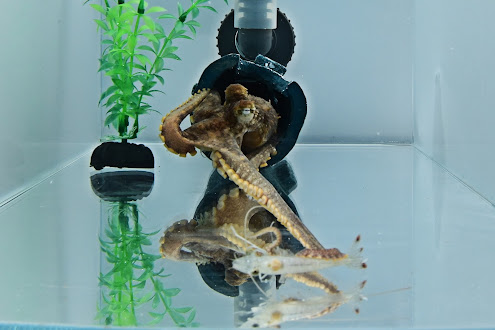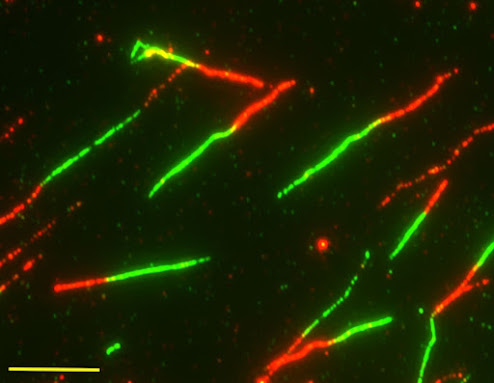 |
| A California two-spot octopus hunts a shrimp in an experiment, striking with its second arm. Credit: Wardill Lab, University of Minnesota |
Famous for their eight arms, octopuses leverage all of their appendages to move, jet through the water and capture prey. But their movements can look awkward and seemingly unplanned at times, more closely resembling aliens than earthly creatures.
“Normally when you look at an octopus for a short while, nothing is repeatable. They squirm around and just look weird in their exploratory movements,” said Trevor Wardill, an assistant professor in the College of Biological Sciences who studies octopuses and other cephalopods.
For a new study in Current Biology, Wardill and colleagues investigated whether octopuses preferred certain arms over others when hunting, rather than using each arm equally. A better understanding of how they use their arms will aid efforts to develop next-generation, highly-manipulative soft robots.
The research team studied the California two-spot octopus, which live for about two years and grow to the size of tennis balls. Octopus arms are numbered on each side of its body, starting at the center. Researchers dropped different types of prey, including crabs and shrimp, into the tanks and recorded video as the octopuses, who were hiding in ornamental SpongeBob “dens” with one eye facing outward, lunged for the snack. Because crabs move slowly while shrimp can flick their tails to escape quickly, each type of prey potentially requires different hunting tactics.


.jpg)












.jpg)
